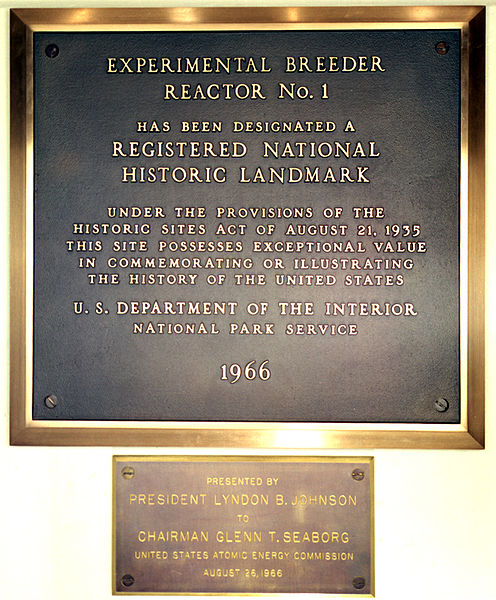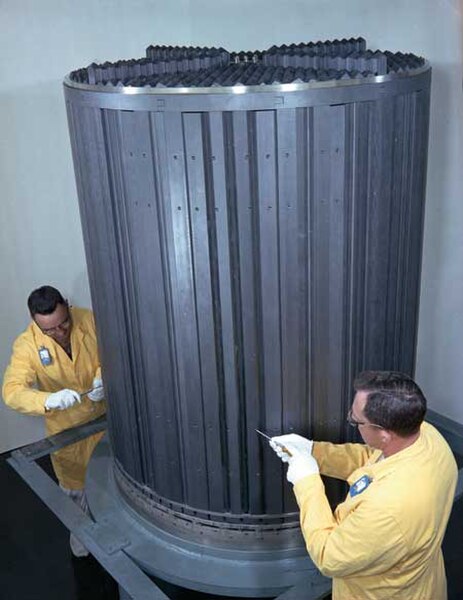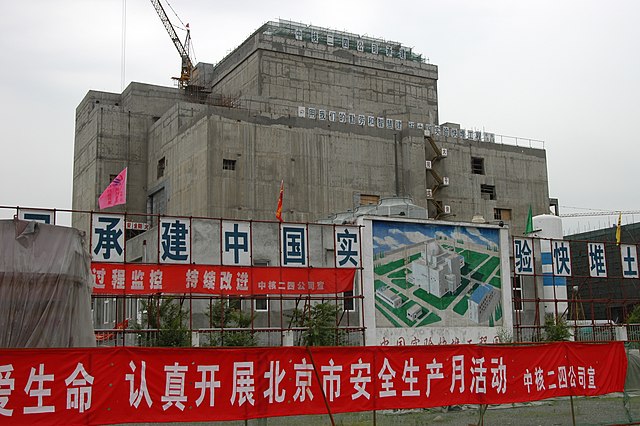Experimental Breeder Reactor I
Experimental Breeder Reactor I (EBR-I) is a decommissioned research reactor and U.S. National Historic Landmark located in the desert about 18 miles (29 km) southeast of Arco, Idaho. It was the world's first breeder reactor. At 1:50 p.m. on December 20, 1951, it became one of the world's first electricity-generating nuclear power plants when it produced sufficient electricity to illuminate four 200-watt light bulbs. EBR-I subsequently generated sufficient electricity to power its building, and continued to be used for experimental purposes until it was decommissioned in 1964. The museum is open for visitors from late May until early September.
Experimental Breeder Reactor Number 1 in Idaho, the first power reactor
Part of the core after the 1955 partial meltdown
Plaques at the EBR-I site
The first production of usable nuclear electricity occurred on December 20, 1951, when four light bulbs were lit with electricity generated from the EBR-I reactor.
A breeder reactor is a nuclear reactor that generates more fissile material than it consumes.
These reactors can be fueled with more-commonly available isotopes of uranium and thorium, such as uranium-238 and thorium-232, as opposed to the rare uranium-235 which is used in conventional reactors. These materials are called fertile materials since they can be bred into fuel by these breeder reactors.
Experimental Breeder Reactor II, which served as the prototype for the Integral Fast Reactor
The graphite core of the Molten Salt Reactor Experiment
The Shippingport Reactor, used as a prototype light water breeder for five years beginning in August 1977
The Chinese Experimental Fast Reactor is a 65 MW (thermal), 20 MW (electric), sodium-cooled, pool-type reactor with a 30-year design lifetime and a target burnup of 100 MWd/kg.








